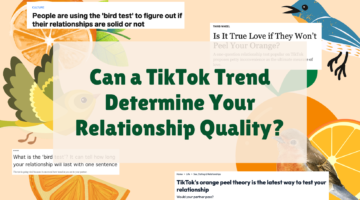Are Diamonds Really Forever? How Engagement Ring Cost is Linked to Marriage Length
August 31, 2020 by Justin Lehmiller
How much “should” you spend on engagement and wedding rings? If you’re anything like me, you’ve probably heard that 2-3 months’ salary is the rule of thumb; however, that’s a totally arbitrary “rule” and it’s one that few people actually seem to follow. In fact, for the average American, it’s closer to two weeks’ pay than two months’ pay.
Regardless of how much people actually spend, the idea is steeped in our culture that rings should be expensive because they’re seen as far more than just a piece of jewelry—they’re viewed as symbols of partners’ love and commitment to one another. But does it really matter how much you spend? Does the cost and size of a wedding ring actually have any bearing on the odds of relationship success and marital bliss?
A study published in the journal Economic Inquiry sought to explore how wedding ring spending is linked to how long a marriage lasts—and what they found is that, if anything, more expensive rings actually tended to be linked to shorter marriages.
Researchers surveyed 3,151 adults who were age 34 on average. In total, 68% of participants were married and had never been divorced, whereas 32% were divorced. Participants were asked about their wedding expenses (and, separately, their engagement ring cost), as well as the length of their marriage.
There was a lot of variability in what people reported spending on engagement rings, and whether they even had an engagement ring at all. That said, looking across gender, what the researchers found was that engagement ring expenditures were largely unrelated to length of marriage. However, certain categories of spending were linked to higher odds of divorce.
Specifically, among those who spent $2,000-$4,000 on their ring specifically, the chances of divorce were higher. I should mention that—among those who had rings and knew the cost—the majority reported spending less than $2,000, so $2-4K is toward the high end of the scale; relatively few spent more than $4,000 on their ring.
The researchers also found that those who spent the least on the wedding itself (less than $1,000 specifically) actually had a lower risk of divorce. By contrast, the most expensive weddings (those costing more than $20,000) were actually linked to greater risk of divorce, at least among the female respondents to the survey.
What all of this suggests is that spending more on engagement rings and weddings does not seem to be linked to longer-lasting marriages. If anything, the pattern tends to go in the opposite direction.
So why is that? One possibility mentioned by the study’s authors is that more expensive weddings and rings may be linked to taking on more debt—and, in turn, more stress about how to pay it off. In other words, perhaps economic distress is the potential mechanism here.
Of course, it could also be that those who spent more might have more financial means and can therefore weather the financial costs of divorce more easily (and divorce can be an expensive proposition!).
Yet another possibility is that those who spend more vs. less are just different in various ways, such as in terms of their personalities and values, or their reasons for getting married in the first place.
In short, we need more research to better understand this association, but these results are provocative in that they suggest that expensive rings and weddings don’t appear to be buffers against divorce or reliable indicators of greater relationship commitment.
Want to learn more about Sex and Psychology ? Click here for previous articles or follow the blog on Facebook (facebook.com/psychologyofsex), Twitter (@JustinLehmiller), or Reddit (reddit.com/r/psychologyofsex) to receive updates. You can also follow Dr. Lehmiller on YouTube and Instagram.
To learn more about this research, see: Francis‐Tan, A., & Mialon, H. M. (2015). “A diamond is forever” and other fairy tales: The relationship between wedding expenses and marriage duration. Economic Inquiry, 53(4), 1919-1930.
Image Source: 123RF/Vitor Pinto
You Might Also Like:

Dr. Justin Lehmiller
Founder & Owner of Sex and PsychologyDr. Justin Lehmiller is a social psychologist and Research Fellow at The Kinsey Institute. He runs the Sex and Psychology blog and podcast and is author of the popular book Tell Me What You Want. Dr. Lehmiller is an award-winning educator, and a prolific researcher who has published more than 50 academic works.
Read full bio >


